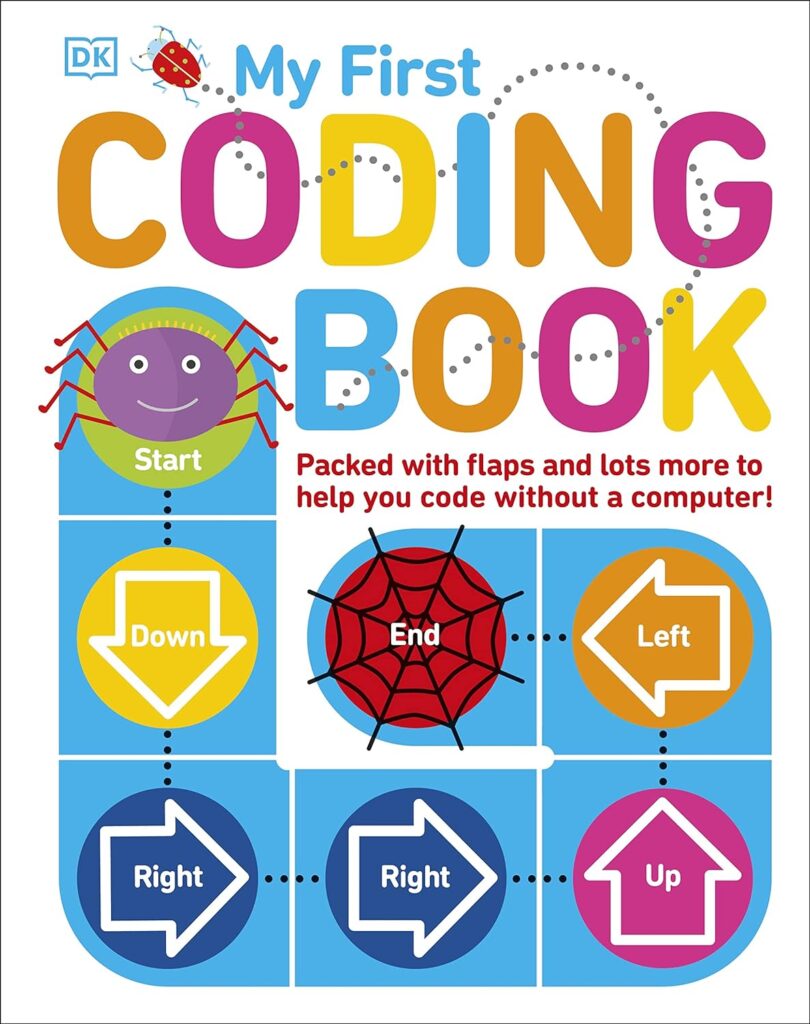
“My First Coding Book” by Kiki Prottsman is a delightful introduction to the world of coding, specifically designed for young learners. With its colorful illustrations and playful tone, this book makes abstract coding concepts accessible and engaging for children.
One of the book’s most commendable features is its focus on hands-on activities. Prottsman encourages readers to experiment with simple coding exercises, such as sequencing instructions and debugging errors, fostering a sense of exploration and creativity. Teachers can capitalize on this interactive approach by incorporating coding games and puzzles into their lessons, providing students with opportunities to apply their newfound skills in a fun and supportive environment.
Furthermore, “My First Coding Book” emphasizes computational thinking skills, teaching students to break down complex problems into smaller, manageable steps. This foundational understanding of problem-solving techniques is invaluable not only in coding but also in various other areas of academic and personal development. Educators can reinforce these skills by encouraging students to tackle real-world challenges using computational thinking strategies.
Additionally, the book promotes collaboration and teamwork, encouraging students to share ideas and collaborate on coding projects. Teachers can facilitate group activities where students work together to solve coding challenges or create their own interactive stories and games. This collaborative learning environment fosters communication skills and promotes a sense of community among students.
One minor drawback of “My First Coding Book” is its relatively limited scope, focusing primarily on introductory coding concepts such as sequencing and loops. While this approach is appropriate for young learners, educators may need to supplement the book with additional resources to cover more advanced coding topics.
To enhance the overall learning experience, instructors can integrate “My First Coding Book” with digital tools and resources, such as coding apps and online tutorials. These resources provide students with opportunities to practice coding in a digital environment and explore advanced coding concepts beyond the scope of the book.
In conclusion, “My First Coding Book” is a valuable resource for educators seeking to introduce coding to young learners in an accessible and engaging way. With its hands-on activities, focus on computational thinking, and emphasis on collaboration, this book equips students with essential skills for success in the digital age. By incorporating supplementary resources and fostering a supportive learning environment, teachers can empower students to become confident and creative coders.